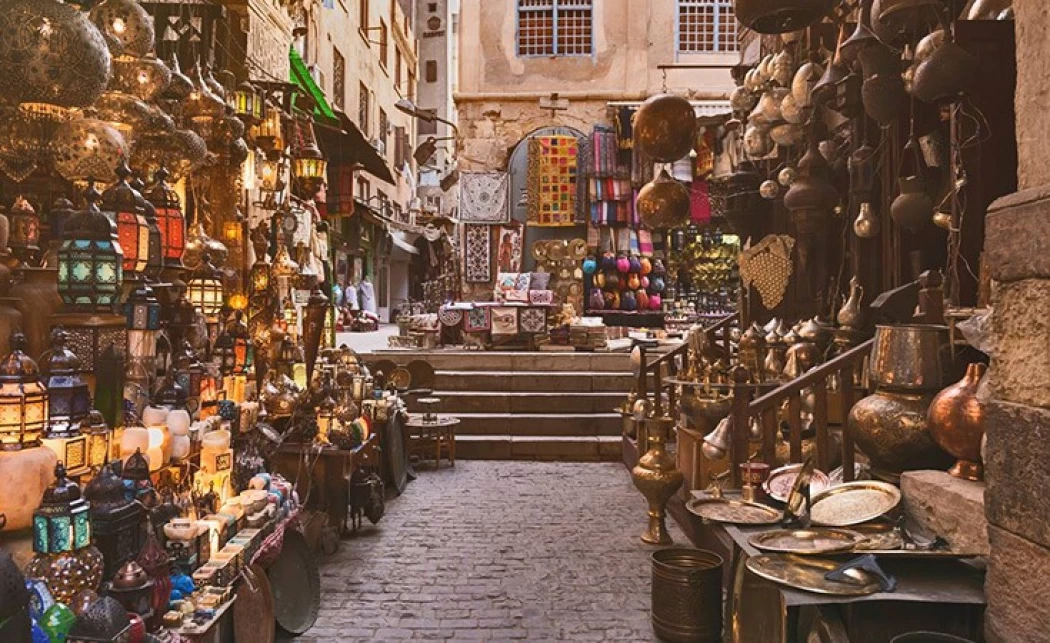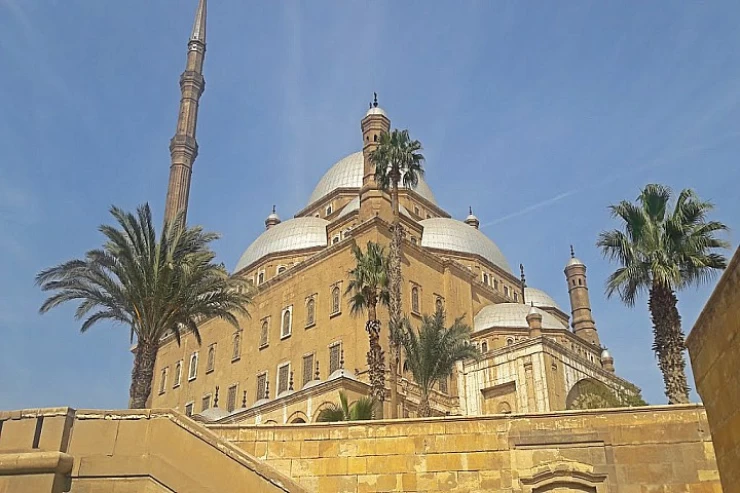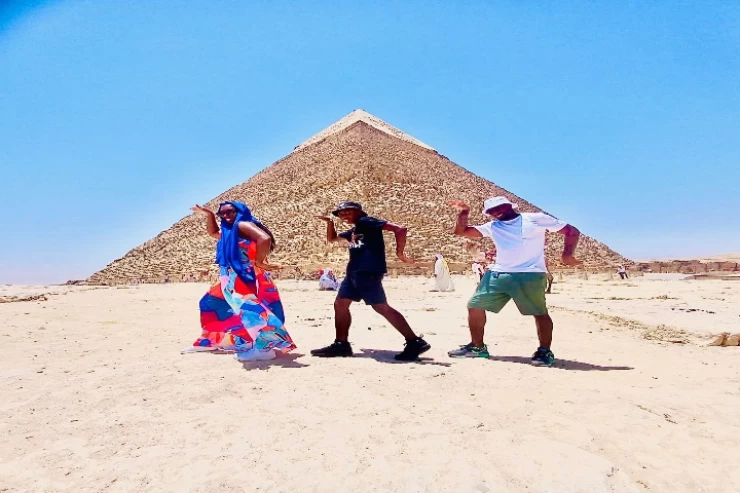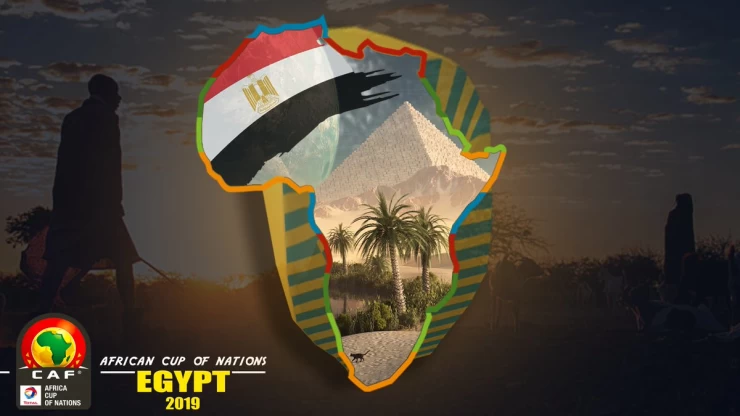
Khan El Khalili
Khan El Khalili Bazaar
han KEl Khalili Bazaar is omnipresent in Islamic Cairo as the oldest and most well-known market in the Middle East. Tracing its origins back to the 14th century, this colorful bazaar has been a center of trade, culture, and art for over 600 years. As a tourist or traveler who has come to Cairo more than once and knows the place inside and out, Khan El Khalili will always provide an experience that is packed with charm and historical significance, as well as that exotic, unforgettable touch.
A Walk Through History Emir Djaharks El Khalili formed Khan El Khalili in 1382, and he built it as a caravanserai where traders could rest and keep their goods. Over the years, it transformed into a huge bazaar where various regions’ traders gathered to sell spices, silks, and other precious metal products, among others. The bazaar continues to have narrow alleyways and cluttered stalls constructing similar old houses, which are such that the visitors feel as if they have traveled back in time.
Khan El Khalili is viewed as a priceless resource of ancient Coptic arts in modern Cairo, retaining its medieval elements. The market’s winding passages are filled with haggling customers and vendors, hungrily inhaling the scent of different spices, while artisans are busy producing everything from jewelry to leather.
Unveiling the Hidden Treasures of the MarketEvery nook and cranny in Khan El Khalili has something different to offer. This makes it a traveler’s and shopper’s utopia filled with endless options. These are some of the orders of interest:
1. Traditional Arts & Crafts and Memento’s
Some of the founders: Find Khan El Khalili, and every Egyptian will get some handicrafts and souvenirs. In the bazaar, you’ll also find more than just delicately crafted gold and silver wear, including foreign hand-carved wooden boxes, and brass, and colored glazed mosaic lantern lamps. Hand-serrated: Several artists, such as glass blowers, carpet makers, and silver craftsmen, work in small studios within the market, allowing for their work to be seen in the process of creation. These are artists who have mastered their art over many years. Another interesting aspect of the very well-known marketplace is the perfume stores, which have Egyptian-made perfumes in small, fragrance-filled glass bottles easily arched for cheap prices. These perfumes are made from plants made in Egypt.
2. Medicinal plants and spice shops
Stirring Hints of Tantalizing Spices: The spice markets of Khan El Khalili are a sight to behold. You will find large piles of various spices, such as saffron, cumin, cardamom, cinnamon, and many more, filling the stalls and creating a rich aroma. Healthy Stuff: As well as that, you are likely to come across natural herbs and some other products, like tea made out of hibiscus flowers, black seed, and camphor. Some of them sell these herbs and answer questions regarding the side effects of these herbs.
e of the historical cafes and restaurants.
my3. Papyrus and Ancient ObjectsPapyrus Art of Ancient Egypt: As you stroll around the market, you will find many stores depicting Egyptian art on papyrus where talented artists reproduce scenes from ancient Egypt. Such unique paintings feature deities, the royal rulers, and even the ancient writing system, providing a glimpse of the history of Egypt.
Reproduction Artifacts: There are various statues of ancient Egyptian gods, such as the dog-headed god Anubis, goddess Bastet, and Horus, as well as other mock tomb-style jewelry sold at some of the stores in the area.
Textiles and DressingDresses and Garments: For those considering themselves fashionistas of some sort, the bazaar also offers not only definitely outdated but some stylish galabeya long robes and even kaftan dresses, along with some embroidered scarves and shawls.
Traditional Weaves: Other striking traditional handlooms, together with carpets like Egyptian cotton and kilim, tell much about the area’s interlacing art.
Khan El Khalili Hotels: Landmarks and GastronoIn addition to shopping, there is a possibility for tourists to enjoy the typical food of the country and get acquainted with the culture in som
1. El Fishawi’s Café:
the one owned for centuries (Café of Mirrors)Historical Context: El Fishawi’s Café is one of those old Cairo cafes that has withstood the test of time over 200 years. The place has been visited by most renowned Egyptian authors, painters, and intellectuals, and therefore, eternally seems frozen in time.
Atmosphere and Ambiance: Situated at the center of the bazaar, El Fishawi’s has an inviting warm atmosphere, owing to its adorned walls with mirrors, wooden tables, and busy patrons. It is an ideal place for taking a break while sipping either mint tea or Turkish coffee and simply enjoying the passing crowd.
Shisha Tradition: For those interested in trying shisha, El Fishawi’s is an excellent place to indulge in this traditional water pipe, available in a variety of flavors, from apple to grape.
2. Local street food
Delectable Snacks: As you wander through Khan El Khalili, you’ll find street vendors selling Egyptian snacks such as taameya (Egyptian falafel), samosas, and koshari. These treats offer a delicious and affordable way to experience the local cuisine.
Sweet Delights: Don’t miss out on basbousa (sweet semolina cake) and konafa (a dessert made from thin noodles soaked in syrup), which are popular Egyptian sweets.
Cultural Experiences: Art, Music, and Stories
Khan El Khalili is not just a marketplace; it’s a cultural hub where you can immerse yourself in Cairo’s vibrant arts scene.
1. Traditional Sufi Performances
Al-Tannoura Dance Troupe: At Wekalet El Ghouri, a nearby historic venue, you can witness the Al-Tannoura Dance Troupe, which performs a mesmerizing blend of Sufi music and dance. The whirling dervishes, dressed in colorful skirts, spin in time with the music, creating a hypnotic display of devotion and artistry.
2. Live music and street performersStreet Artists: Throughout the bazaar, you may encounter street performers, including musicians playing traditional instruments like the oud and qanun, adding to the lively atmosphere of the market.
Storytellers: Occasionally, you may find traditional storytellers, or hakawati, who share folk tales and legends of Cairo, providing a glimpse into Egypt’s rich oral history.
Insider Tips for Visiting Khan El Khalili
Here are useful recommendations regarding Khan El Khalili that will help you enjoy the place more:
Haggle with Respect: Bargaining is a way of life in the bazaar. It is allowed, but even encouraging this strong trait, one has to observe boundaries and apply caution.
Visit Early or Late: The market gets very full, especially in the afternoons. If you want to avoid the most crowded hours, visit very early, when the temperatures are brisk, or later in the evening, when the humidity is tolerable and there are not many people around.
Explore Side Streets: Though the major streets are filled with people, do not be afraid to go around to the less busy side streets. You will discover treasures and outlets with interesting and hard-to-find merchandise.
Stay Hydrated: Summers in Cairo can be scorching hot; it will be prudent to carry water and dress in light clothes and shoes.
Observe Cultured Behavior: Be aware that Khan El Khalili is famous among natives and foreigners alike and dress appropriately and respect the traditions there.
A Timeless Experience in the Heart of Cairo
Khan El Khalili is not simply a place to shop; it is an experience that depicts the very heart of Cairo. It could be the delicious smell of the herbs and spices used in cooking or the beautifully created works of art; there is a story in every place of the market. If you are looking for a quintessentially Egyptian place where it seems that time stands still and the old and modern cultures coexist, Khan El Khalili does fulfill this. Amidst the hunting of the glories, indulging in delicious cuisine, or just enjoying the surroundings, visiting Khan El Khalili is an extraordinary experience that encapsulates Egypt as a whole.
Khan KEl Khalili Bazaar is omnipresent in Islamic Cairo as the oldest and most well-known market in the Middle East. Tracing its origins back to the 14th century, this colorful bazaar has been a center of trade, culture, and art for over 600 years. As a tourist or traveler who has come to Cairo more than once and knows the place inside and out, Khan El Khalili will always provide an experience that is packed with charm and historical significance, as well as that exotic, unforgettable touch.
A Walk Through History Emir Djaharks El Khalili formed Khan El Khalili in 1382, and he built it as a caravanserai where traders could rest and keep their goods. Over the years, it transformed into a huge bazaar where various regions’ traders gathered to sell spices, silks, and other precious metal products, among others. The bazaar continues to have narrow alleyways and cluttered stalls constructing similar old houses, which are such that the visitors feel as if they have traveled back in time.
Khan El Khalili is viewed as a priceless resource of ancient Coptic arts in modern Cairo, retaining its medieval elements. The market’s winding passages are filled with haggling customers and vendors, hungrily inhaling the scent of different spices, while artisans are busy producing everything from jewelry to leather.
Unveiling the Hidden Treasures of the MarketEvery nook and cranny in Khan El Khalili has something different to offer. This makes it a traveler’s and shopper’s utopia filled with endless options. These are some of the orders of interest:
Some of the founders: Find Khan El Khalili, and every Egyptian will get some handicrafts and souvenirs. In the bazaar, you’ll also find more than just delicately crafted gold and silver wear, including foreign hand-carved wooden boxes, and brass, and colored glazed mosaic lantern lamps. Hand-serrated: Several artists, such as glass blowers, carpet makers, and silver craftsmen, work in small studios within the market, allowing for their work to be seen in the process of creation. These are artists who have mastered their art over many years. Another interesting aspect of the very well-known marketplace is the perfume stores, which have Egyptian-made perfumes in small, fragrance-filled glass bottles easily arched for cheap prices. These perfumes are made from plants made in Egypt.
2. Medicinal plants and spice shops
Stirring Hints of Tantalizing Spices: The spice markets of Khan El Khalili are a sight to behold. You will find large piles of various spices, such as saffron, cumin, cardamom, cinnamon, and many more, filling the stalls and creating a rich aroma. Healthy Stuff: As well as that, you are likely to come across natural herbs and some other products, like tea made out of hibiscus flowers, black seed, and camphor. Some of them sell these herbs and answer questions regarding the side effects of these herbs.
3. Papyrus and Ancient ObjectsPapyrus Art of Ancient Egypt: As you stroll around the market, you will find many stores depicting Egyptian art on papyrus where talented artists reproduce scenes from ancient Egypt. Such unique paintings feature deities, the royal rulers, and even the ancient writing system, providing a glimpse of the history of Egypt.
Reproduction Artifacts: There are various statues of ancient Egyptian gods, such as the dog-headed god Anubis, goddess Bastet, and Horus, as well as other mock tomb-style jewellery sold at some of the stores in the area.
Textiles and Dressing Dresses and Garments: For those considering themselves fashionistas of some sort, the bazaar also offers not only definitely outdated but some stylish galabeya long robes and even kaftan dresses, along with some embroidered scarves and shawls.
Traditional Weaves: Other striking traditional handlooms, together with carpets like Egyptian cotton and kilim, tell much about the area’s interlacing art.
Khan El Khalili Hotels: Landmarks and GastronoIn addition to shopping, there is a possibility for tourists to enjoy the typical food of the country and get acquainted with the culture in som
1. El Fishawi’s Café:
the one owned for centuries (Café of Mirrors)Historical Context: El Fishawi’s Café is one of those old Cairo cafes that has withstood the test of time over 200 years. The place has been visited by most renowned Egyptian authors, painters, and intellectuals, and therefore, eternally seems frozen in time.
Atmosphere and Ambiance: Situated at the center of the bazaar, El Fishawi’s has an inviting warm atmosphere, owing to its adorned walls with mirrors, wooden tables, and busy patrons. It is an ideal place for taking a break while sipping either mint tea or Turkish coffee and simply enjoying the passing crowd.
Shisha Tradition: For those interested in trying shisha, El Fishawi’s is an excellent place to indulge in this traditional water pipe, available in a variety of flavors, from apple to grape.
2. Local street food
Delectable Snacks: As you wander through Khan El Khalili, you’ll find street vendors selling Egyptian snacks such as taameya (Egyptian falafel), samosas, and koshari. These treats offer a delicious and affordable way to experience the local cuisine.
Sweet Delights: Don’t miss out on basbousa (sweet semolina cake) and konafa (a dessert made from thin noodles soaked in syrup), which are popular Egyptian sweets.
Cultural Experiences: Art, Music, and Stories
Khan El Khalili is not just a marketplace; it’s a cultural hub where you can immerse yourself in Cairo’s vibrant arts scene.
1. Traditional Sufi Performances
Al-Tannoura Dance Troupe: At Wekalet El Ghouri, a nearby historic venue, you can witness the Al-Tannoura Dance Troupe, which performs a mesmerizing blend of Sufi music and dance. The whirling dervishes, dressed in colorful skirts, spin in time with the music, creating a hypnotic display of devotion and artistry.
2. Live music and street performersStreet Artists: Throughout the bazaar, you may encounter street performers, including musicians playing traditional instruments like the oud and qanun, adding to the lively atmosphere of the market.
Storytellers: Occasionally, you may find traditional storytellers, or hakawati, who share folk tales and legends of Cairo, providing a glimpse into Egypt’s rich oral history.
An early evening visit would be best since the bazaar starts lighting up, with the sound of music and performances turning Khan El Khalili into a stage for living culture.


















